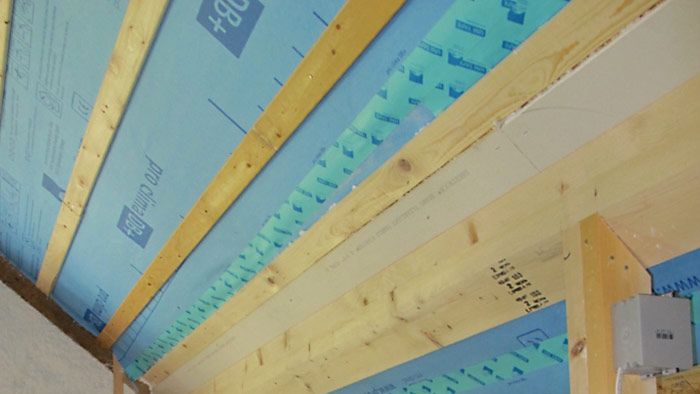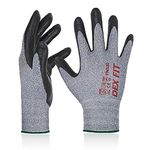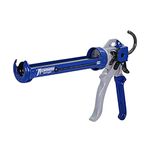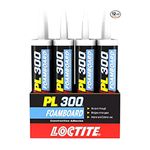Smart Vapor Retarders for Walls and Roofs
Can a smart vapor retarder be used to make an otherwise risky assembly safe?

During the winter, when indoor air is usually warm and humid, most wall sheathing is cold. Under these conditions, we really don’t want water vapor to move from the interior of our homes toward the exterior. That’s why builders in the 1980s installed polyethylene on the interior side of walls.
During the summer, on the other hand, outdoor air can be warm and humid, while our drywall is often cooled by the air conditioning system. Under these conditions, we want to limit the movement of water vapor from the exterior toward the interior. We also want to allow any moisture in our walls to be able to move toward the interior of our homes, unimpeded by a vapor barrier, so that a damp wall assembly can dry out. That’s why an interior-side vapor barrier works against us during the summer.
There are two possible solutions to this dilemma. The first solution is to install an adequate thickness of continuous rigid foam on the exterior side of the wall sheathing. This foam layer prevents inward vapor drive during the summer, while also keeping the wall sheathing warm enough during to winter to avoid condensation or moisture accumulation.
In some types of wall and roof assemblies, it may be appropriate to consider a second solution: installing a “smart” vapor retarder — that is, a membrane with variable vapor permeance — on the interior side of the wall assembly.
The membrane’s vapor permeance rises and falls
When conditions are dry, a smart vapor retarder is relatively vapor-tight (in other words, it has a relatively low vapor permeance). When the air or the building materials adjacent to a smart vapor retarder get more humid, however, the membrane becomes more vapor-open — in other words, its vapor permeance increases. Under dry conditions, it acts like a vapor retarder; while under humid conditions, it opens up and allows moisture to pass through it.
In the U.S., the best-known smart vapor retarders are CertainTeed’s MemBrain and two Pro Clima products: Intello Plus and DB+.
According to CertainTeed, MemBrain has a vapor permeance equal to or less than 1 perm when dry, and 10 perms when damp.
According to Pro Clima, Intello Plus has a vapor permeance of 0.17 perm when dry and 13 perms when damp. In other words, Intello Plus is a more effective vapor barrier when dry than MemBrain, and is more vapor-open when damp than MemBrain.
According to Pro Clima, DB+ (a smart vapor retarder that is less expensive than Intello Plus) has a vapor permeance of 0.8 perm when it is dry and 5.5 perms when damp. That means that the vapor permeance range of DB+ is not as great as that of Intello Plus.
Lots of building materials have variable permeance
If you want to install a building material with variable vapor permeance, you don’t have to buy a smart vapor retarder. Many common building materials — including the kraft facing on fiberglass batts, asphalt felt, vapor-retarder paint, plywood, and OSB — also have variable vapor permeance. All of these materials restrict vapor flow when dry, but become more vapor-open when damp. (However, their range of vapor permeance may not match the permeance range of smart vapor retarders.)
Smart vapor retarders aren’t magic. In a recent article in the Journal of Light Construction, Ted Cushman addressed common misunderstandings and exaggerations that accompany the marketing of smart retarders. “In the field, you may hear salesman as well as contractors offering a whole grab bag of unscientific theories,” Cushman wrote. “Contrary to what you may hear, this class of vapor barriers is not a one-way gate that lets vapor pass through in only one direction. Vapor diffusion through a smart membrane, like vapor diffusion in still air, moves from more humid to less humid. … Products on the market today also don’t have ‘active vapor transport.’ That term refers to materials that can move vapor through the material against the direction of the vapor drive — what you might call ‘uphill’ — when voltage is applied to the material.”
The 475 approach
Unsurprisingly, the U.S. distributor of Pro Clima products, 475 High Performance Building Supply, heavily promotes the use of smart vapor retarders. The company recently posted a blog, “Insulating Unvented Roof Assemblies,” advocating the use of smart retarders to create a roof assembly that violates most building codes.
According to the two founders of 475, Ken Levenson and Floris Keverling Buisman, a roof assembly that is ordinarily considered risky — namely, an unvented roof assembly insulated with cellulose or fiberglass — can be rendered safe by installing a smart vapor retarder on the interior side of the assembly. Levenson and Buisman justify their recommendation with WUFI modeling. (WUFI is a software program that predicts the moisture content of different building components in wall assemblies and roof assemblies.)
Building codes require a ventilated air space between the top of air-permeable insulation materials and the underside of the roof sheathing for a reason: without the ventilated air space, moisture from warm interior air can accumulate on the cold roof sheathing during the winter. Because most roofing products are vapor-impermeable, damp roof sheathing can’t dry to the exterior in the way that damp wall sheathing can.
There are at least two possible problems with 475’s advice on unvented roof assemblies:
- On its face, the assembly promoted by 475 violates building codes, and can only be used if the local code official certifies compliance based on evidence presented by the architect, contractor, or owner of the building. Obtaining code approval for this type of roof assembly is likely to be both time-consuming and uncertain.
- This apparently risky roof assembly is justified on the basis of computer modeling and limited monitoring data, not long field experience. Many building scientists are doubtful that WUFI, the software used by 475 to justify their recommended roof assembly, provides results that are robust enough to justify using this unvented assembly without qualms. (For more information on this topic, see WUFI Is Driving Me Crazy and Hygrothermal Software Sometimes Yields False Results.)
Talking to the experts
In hopes of gaining perspective on 475’s advice, I decided to contact three engineers with field experience and building science expertise: Joe Lstiburek, John Straube, and Marc Rosenbaum. All three experts agreed that the roof assembly recommended by 475 is risky.
Joseph Lstiburek. Lstiburek, a principal at the Building Science Corporation in Westford, Massachusetts, is familiar with 475’s advice. (Lstiburek told me that the owners of 475 have challenged him in the past. “I don’t know why 475 keeps taking a run at me,” Lstiburek said. “They should stop kicking me.”) When I asked Lstiburek about 475’s recommendations on unvented roof assemblies insulated with cellulose, he said, “I think that it is risky and I wouldn’t recommend it. If they added a vapor diffusion vent at the ridge, I would have no problem with that assembly.” (A vapor diffusion vent is a new type of ridge vent invented by Lstiburek. It is an opening in the roof sheathing near the ridge that is covered with housewrap that is taped to the roof sheathing on all sides. This type of vent is airtight but vapor-permeable. For more information on vapor diffusion vents, see Can Unvented Roof Assemblies Be Insulated With Fiberglass?)
John Straube. According to Straube, a professor of Building Envelope Science at the University of Waterloo in Ontario, the 475 approach “does nothing to solve the potential for excess cold weather air leakage condensation. The smart vapor retarder (SVR) won’t help if you have a pencil-sized hole in the SVR and an outward leakage path (to exterior or interior) somewhere higher up the rafter bay. The past success of dense-packed cellulose is based largely on low interior winter RH values, and with the airtightness and smaller size houses we see today, interior RH is often too high. Will a SVR perform better than sheet poly or just painted GWB? Yes, and significantly better. Is it a low-risk? Not in my opinion.”
Marc Rosenbaum. Rosenbaum is a well-known energy consultant and the director of engineering at South Mountain Company in Chilmark, Massachusetts. When I asked Rosenbaum about the 475 approach, he said, “I think that those assemblies are risky. Given what we’ve learned, I wouldn’t do it.”
Examples of failed roofs
Rosenbaum’s advice is based on field observations of failures.
Rosenbaum told me, “In a Cape Cod house, I’ve seen dense-packed rafter bays where the cellulose has settled enough to see into the bays from the attic, with an air gap of about 3/4 inch in a 10-inch-deep rafter cavity. On the north side of the house, I could see water on the underside of the roof sheathing. This was in a house that was fairly airtight — about 1 ach50 — after a bunch of air sealing work was completed. Where did the moisture come from? Was this diffusion? Well, the drywall had vapor retarder paint, and the vapor retarder paint is close in performance to a smart vapor retarder. Somehow air was moving in all of those bays. The south side of the roof dried out, while the north side didn’t dry out. What about cellulose’s ability to redistribute moisture? That redistribution is actually limited. If there is a leak, it’s just wet near the leak. There is limit to that ‘capillarity magic.’ ”
Can we trust WUFI?
In my 2014 article on WUFI, I wrote, “Here’s my advice to architects: in general, be very wary of WUFI simulations. Although a handful of engineering companies in the U.S. probably have enough experience to provide useful WUFI results, it can be very difficult for an architect to separate valid WUFI runs from poppycock and horsefeathers.”
When it comes to using WUFI, building professionals tend to cluster into two groups. In one group are the professionals with limited job-site experience. Many of these are WUFI-loving architects. In the second group are the professionals with extensive job-site experience. Many of these are engineers, and they tend to be WUFI-skeptics.
“I would always be suspicious of people using WUFI to analyze a roof they have not measured, especially when the analysis ignores air leakage (which we know is the primary cause of unvented roof condensation failure),” Straube told me. “This is an example of a wonderful tool perfectly analyzing the wrong problem. Alas, we see this far too often.”
Less risky assemblies
The experts I spoke with explained that one dependable way to prevent damp roof sheathing is to install rigid foam insulation on the exterior side of the sheathing.
Straube noted that 475 customers could “make an unvented roof with a smart vapor retarder work by using some exterior insulation over the sheathing and an exterior air barrier on the sheathing. This gets the airtightness levels up reliably and reduces the condensation risk dramatically by warming the sheathing. Or they can use rockwool outside and cellulose inside (since I know they have an irrational fear of both using tried-and-tested North American methods and foam).”
What are smart vapor retarders good for?
Of course, the fact that smart vapor retarders become more vapor-open during high-humidity events isn’t always desirable, and there are many problems that smart vapor retarders can’t solve. When asked about smart vapor retarders, Lstiburek noted, “These new products work predictably. But you have to control the interior relative humidity for these products to work. If you build a tight house, and if the interior moisture levels rise, then you open the smart valve, and the moisture passes through the membrane. But if you keep the interior relative humidity down to between 25% and 35% in the winter, it is a good technology.”
In some parts of North America, local code inspectors still insist on interior polyethylene — even though interior polyethylene can cause problems when a house is air conditioned during the summer. In these areas, it may make more sense to install a smart vapor retarder than to argue with the code official. In Cushman’s JLC article, John Straube is quoted as saying that in this type of installation, “the smart material really solved a building official problem, not a building science problem.”
Rosenbaum suggested one good application for smart retarders. He said, “A smart vapor retarder for a double stud wall is a good idea.”
Originally published on GreenBuildingAdvisor.com.
Fine Homebuilding Recommended Products
Fine Homebuilding receives a commission for items purchased through links on this site, including Amazon Associates and other affiliate advertising programs.

Nitrile Work Gloves

Caulking Gun

Loctite Foamboard Adhesive





